Introduction to Dental Terminology
Introduction to Dental Terminology
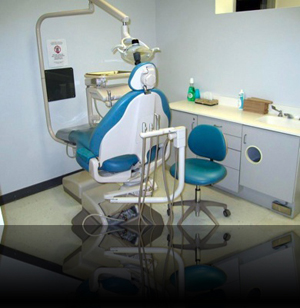 Ok, so you're here wanting to get an early start with some of the terminology you'll be using in the program you're about to start or thinking about entering. Or maybe you want to have a little more understanding of the "language" that they are speaking when you go to the dentist. Well, you have come to the right place! This lesson will give you a little insight into some of the terms that we'll use in the program, as well as in the field of dentistry.
Ok, so you're here wanting to get an early start with some of the terminology you'll be using in the program you're about to start or thinking about entering. Or maybe you want to have a little more understanding of the "language" that they are speaking when you go to the dentist. Well, you have come to the right place! This lesson will give you a little insight into some of the terms that we'll use in the program, as well as in the field of dentistry.
Naturally, I have some things for us to go over, so here are the objectives of this lesson:
- Distinguish between the primary, secondary and mixed dentitions.
- Describe the arrangement of the teeth in each dentition, arch and quadrant.
- Identify any tooth in either dental arch by name and / or tooth letter or number.
- Demonstrate a use of the universal numbering system for deciduous and permanent teeth.
- Identify each tooth surface that is found on anterior and posterior teeth.
In order to meet these objectives, this lesson will contain a variety of instructional materials. As you go through the pages of this lesson, you may come across one of these-  If you click on this sound icon, you will be able to hear how a specific word is pronounced.
If you click on this sound icon, you will be able to hear how a specific word is pronounced.
Helpful Hint
So, let's go to the next page and we can get you started!
Dentition
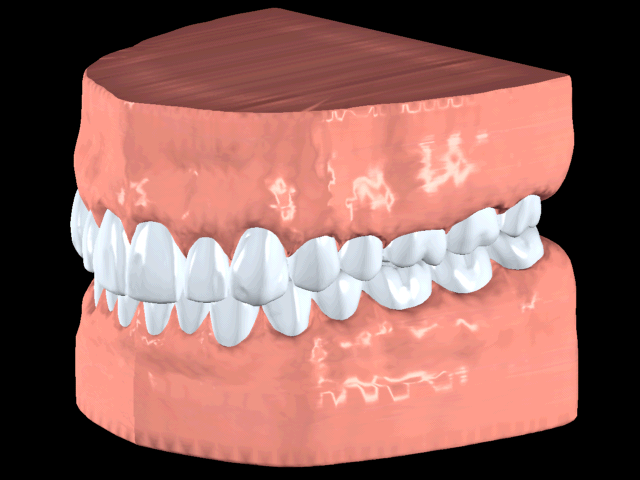 The word dentition
The word dentition  refers to the general arrangement of teeth. Dentition basically tells you that specific teeth are found in a specific areas of the mouth and that the top teeth contact the lower teeth in a certain manner.
refers to the general arrangement of teeth. Dentition basically tells you that specific teeth are found in a specific areas of the mouth and that the top teeth contact the lower teeth in a certain manner.
You may not realize it, but you already know some things about the dentition. You know that there are top and bottom teeth, as well as front and back teeth. Another thing you probably know is that at different times in our lives, different teeth are present. As an infant, we have baby teeth. As we get older, the baby teeth are replaced by adult teeth.
So, as we take a closer look at the term dentition, we find 3 types of dentitions or teeth that exist:
1. Deciduous Teeth
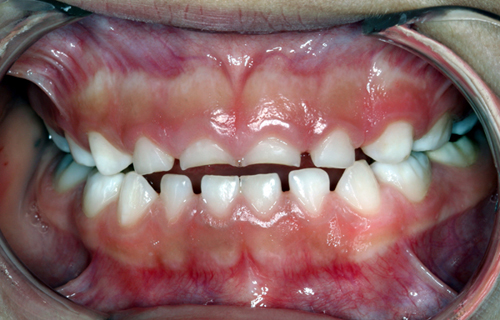 deciduous
deciduous  teeth are also called primary or baby teeth
teeth are also called primary or baby teeth- every deciduous or primary tooth will be replaced by a permanent tooth
- there are 20 deciduous teeth in the mouth (10 deciduous teeth in the top jaw and 10 deciduous teeth in the bottom jaw)
2. Permanent Teeth
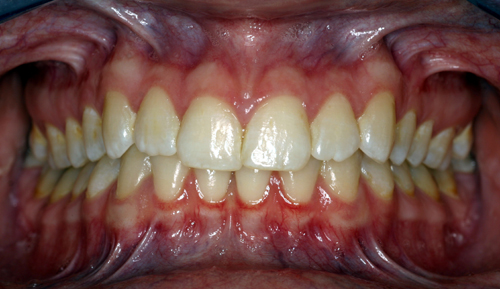 permanent teeth are also called adult or secondary teeth
permanent teeth are also called adult or secondary teeth- some permanent teeth replace a primary tooth, but not all permanent teeth replace a primary tooth
- the first permanent tooth erupts around age 6
- there are 32 permanent teeth in the mouth- as you may already know, not everyone will have all 32. Some people will not get wisdom teeth, etc.... and some people can actually have more than 32 teeth
- there are 16 permanent teeth in the top jaw and 16 permanent teeth in the bottom jaw
3. Mixed Dentition
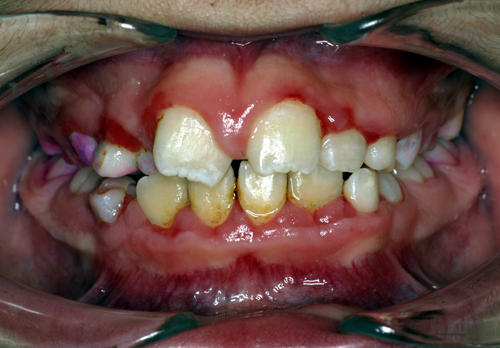 a mixed dentition exists when the person has both primary and permanent teeth present
a mixed dentition exists when the person has both primary and permanent teeth present- as soon as the first permanent tooth erupts, the person has a mixed dentition; when the last primary tooth is lost, the person has a permanent dentition
- mixed dentitions are typically seen in those that are 6 - 13 years of age
Ok, it's time to see how this material is going so far. Here are 2 questions for you:


Mouth Divisions
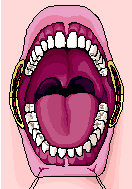 A person's mouth can be divided into smaller sections. It can be divided into top and bottom, as well as into right and left sides. Let's look at these divisions a little more.
A person's mouth can be divided into smaller sections. It can be divided into top and bottom, as well as into right and left sides. Let's look at these divisions a little more.
The mouth can be divided into a top and a bottom jaw and we call these arches. The top arch is called the maxilla or maxillary arch and the bottom arch is called the mandible or mandibular arch.
Each arch can be further divided into a right and left side. By doing this, we end up with something that's called a quadrant. Since each arch has 2 quadrants, there are 4 quadrants in a mouth.
Helpful Hint
Here is a quick question to make sure everything is going okay: 
Quadrants
In order to make sure that everyone in the dental field is talking about the same thing, we use a standard method of naming and numbering quadrants.
There are 4 quadrants:
|
Maxillary Right (quadrant 1)
|
Maxillary Left (quadrant 2)
|
|
Mandibular Right (quadrant 4)
|
Mandibular Left (quadrant 3)
|

divided by a midline
Let's see how you do with a question on quadrants: 
I'm wondering.... did you notice that quadrant 1 starts in the upper right with quadrant 4 ending in the lower right? This quadrant 1 - 4 pattern will actually come into play when we talk about tooth numbering.
If you want to see a video that reviews information discussing arches and quadrants, please click here.
(Video transcript)
Names of Teeth
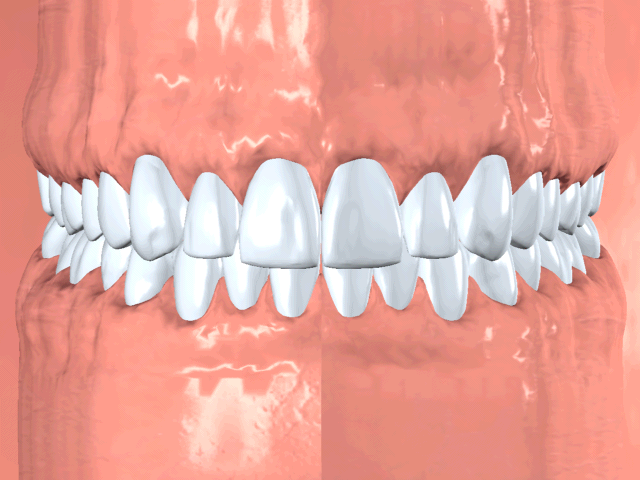 So, do you already know the names for each type of tooth? If so, that's great! If not, that's okay. We'll take a look at this so you will know them too!
So, do you already know the names for each type of tooth? If so, that's great! If not, that's okay. We'll take a look at this so you will know them too!
The different types of teeth that are found in the mouth include:
- central incisors
- lateral incisors
- canines
- premolars
- molars
To see where each of these teeth are located within the maxillary arch, take a look at this next exercise: 
Now comes a set of tougher questions, so let's see how you do with these! They will test to see how well you looked at the Hot Spot Activity above.
I'm ready to see the first one!
Ok, I am so ready for the next question!
Types of Teeth
Anterior teeth
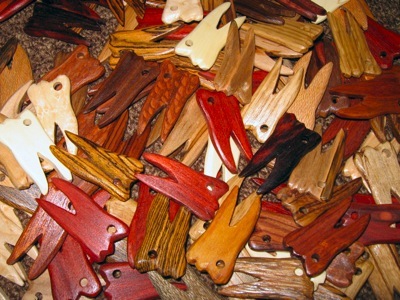 Anterior teeth are the teeth that are found in the front of the mouth. Anterior teeth are found in both the maxillary and mandibular arches, as well as in the deciduous and permanent dentitions.
Anterior teeth are the teeth that are found in the front of the mouth. Anterior teeth are found in both the maxillary and mandibular arches, as well as in the deciduous and permanent dentitions.
The following teeth are anterior teeth:
- central incisors
- lateral incisors
- canines
Posterior teeth
Posterior teeth are the teeth that are found in the back of the mouth. Posterior teeth are found in both the maxillary and mandibular arches, as well as in the deciduous and permanent dentitions.
The following teeth are posterior teeth:
So, it's once again time to see how things are going with this material. Here is another little test: 
Before we go on, let's make sure that you are comfortable with the different types of teeth that are found in a dentition:

Deciduous Dentition - Types of Teeth
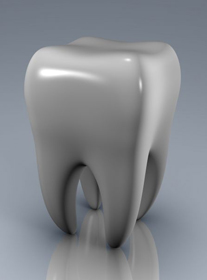 When looking at the deciduous or primary dentition, we see a slight difference from that of a permanent dentition.
When looking at the deciduous or primary dentition, we see a slight difference from that of a permanent dentition.
In a deciduous dentition, the following teeth are present in each quadrant:
- primary central incisor
- primary lateral incisor
- primary canine
- primary first molar
- primary second molar
Anterior teeth
The primary anterior teeth include:
- primary central incisors
- primary lateral incisors
- primary canines
Posterior teeth
The primary posterior teeth include:
- primary molars (primary first molar and primary second molar)
Helpful Hints
Here is another little review question for you- 
Arch Positions
 To help make the previous page of information more understandable, I want to go over the teeth that will be found in any given quadrant. To do this, let's take a look at the teeth that are found in quadrant 1. Remember, each quadrant will have similar findings, but we are only looking at quadrant 1 in this example.
To help make the previous page of information more understandable, I want to go over the teeth that will be found in any given quadrant. To do this, let's take a look at the teeth that are found in quadrant 1. Remember, each quadrant will have similar findings, but we are only looking at quadrant 1 in this example.
Starting with the most posterior tooth of the right side of the maxillary arch and working forward, we will have the following teeth in a primary dentition:

Now let's do the same thing for the permanent dentition. Starting with the most posterior tooth of the right side of the maxillary arch and working forward, we will have the following teeth:
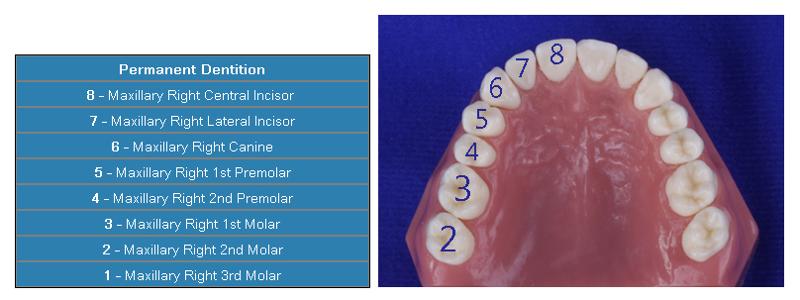
Here are some things to learn about the primary and permanent dentitions from the above tables / pictures:
- There are 5 primary and 8 permanent teeth in any given quadrant.
- When naming a primary tooth, we must always include the word "primary".
- When naming a permanent tooth, we do not include the word "permanent".
Here is another activity to make sure you are doing okay with this material:

This activity will require that you put a lot of things together that we have talked about, but will also make you really think!

Primary Tooth Letters
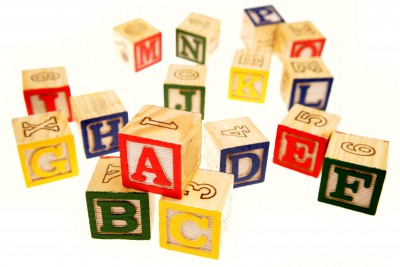 In order to identify a specific primary tooth, each primary tooth is given a letter and a name. This Universal Numbering System allows everyone to be talking about the same tooth. In the primary dentition, letters A - T are present. Letters A - J are in the maxillary arch and letters K - T are in the mandibular arch.
In order to identify a specific primary tooth, each primary tooth is given a letter and a name. This Universal Numbering System allows everyone to be talking about the same tooth. In the primary dentition, letters A - T are present. Letters A - J are in the maxillary arch and letters K - T are in the mandibular arch.
Starting with the last tooth in quadrant 1, we have letter A. As we go forward or towards the midline, we have letters B, C, D and E. Letter F is found at the midline in quadrant 2. We continue lettering until we reach letter J at the end of quadrant 2. Therefore, tooth letters A - J are found in the maxillary arch.
Moving down into the mandibular arch and specifically the back of quadrant 3, we continue with letter K. Moving from the posterior aspect of quadrant 3 towards the midline, have letter O. At the midline, we cross into quadrant 4 and have letter P. Lettering is continued until we end with the last letter in quadrant 4, letter T.
Tooth Letters
As you saw is the photo album, lettering of the primary teeth starts with the last tooth in the upper right quadrant (letter A) and continues over to the last tooth in the upper left quadrant (letter J). From here, lettering continues with the last tooth in the lower left quadrant (letter K) and continues until we reach the last tooth in the lower right quadrant (letter T).
If you want to see a video that reviews information on tooth lettering, please click here.
(Video transcript)
Yes, it's that time again- it's time to see how you're doing with this material.



Tooth Numbers - Permanent Teeth
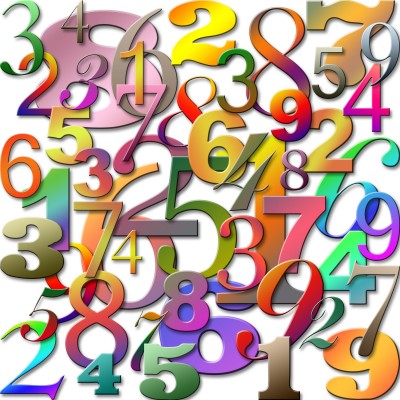 In order to identify a specific permanent tooth, each tooth is given a number and a name. This Universal Numbering System allows everyone to be talking about the same tooth. The maxillary arch contains tooth numbers 1 - 16 and the mandibular arch contains tooth numbers 17 – 32.
In order to identify a specific permanent tooth, each tooth is given a number and a name. This Universal Numbering System allows everyone to be talking about the same tooth. The maxillary arch contains tooth numbers 1 - 16 and the mandibular arch contains tooth numbers 17 – 32.
As with the primary teeth, numbering is done in a specific manner. Numbering begins in the posterior aspect of Quadrant 1 and goes forward towards the midline. Crossing the midline, numbering continues to the posterior aspect of the Quadrant 2. Moving down into Quadrant 3, numbering continues as we go from posterior to anterior. We cross over the midline and into Quadrant 4 and continue to the posterior aspect of this quadrant.
Here is another self-check question- 
Tooth Numbers - Permanent Teeth
Each permanent tooth is given a number. Here is a list of the permanent tooth numbers and names.
Tooth Numbers
Here are a few questions with regards to the numbering and naming of teeth:


Things to learn from the photo album:
1. not all people will have their third molars (they may have never developed, not erupted or removed).
2. if a tooth is not present, the number is still assigned to that tooth and the number is skipped.
If you want to see a video that reviews information on tooth numbering, please click here.
(Video transcript)
Here is a matching question that deals with tooth letters and numbers.
Tooth Surfaces
This is the last area that we'll cover in this lesson. To help introduce you to the subject of tooth surfaces, let me give you an example.
Suppose you tell me that you need tooth #9 filled because it has a cavity. First of all, did you realize that you just told me that the maxillary left central incisor has the cavity?
In order to work on tooth #9, I will put the tooth to "sleep" by giving you a local anesthetic. Once tooth #9 is "sleeping", I start to work on it. All of a sudden, you realize that I am working in the wrong area on the tooth! Doesn't sound great, does it? We avoid issues like this by giving each side of a tooth a specific name. These sides on a tooth are called tooth surfaces.
The crown of any tooth is divided into surfaces and these surfaces are named according to the direction in which they face. 
Let me demonstrate the idea of tooth surfaces by using a box. If the box is sitting on a table, we can see that it has 5 sides to it (not including the side the table is touching). If I asked you to draw an O on the top of the box, you can easily do that since you know which side or surface is the top. You could also label any of the other sides, if I told you which side I was talking about. Let's go to the next page to show you how these principles can be applied to a tooth.
Tooth Surfaces
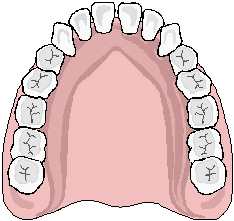 Using teeth in the maxillary arch, let's take a look at the location of the tooth surfaces that can be found on each of the teeth.
Using teeth in the maxillary arch, let's take a look at the location of the tooth surfaces that can be found on each of the teeth.
Helpful Hints
The terms listed below are tooth surfaces.
Mesial
Distal
Facial (labial)
Buccal
Lingual
Palatal
Occlusal
Incisal
So, now that we have talked about tooth surfaces, let's finish up this lesson with some final questions.


Final Thoughts
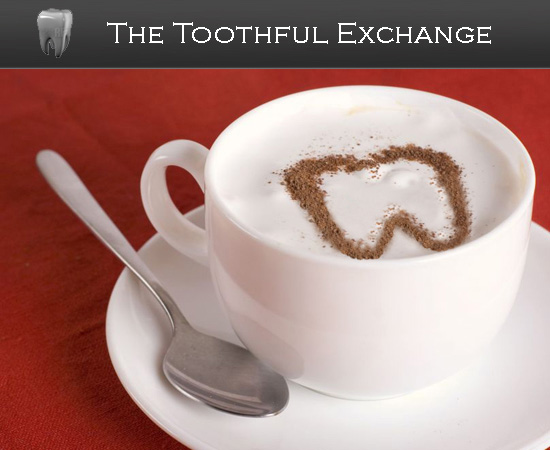 We've come to the end of this lesson. Some of the areas that were covered will take time to fully master.The best way to become comfortable with this new language is to practice.
We've come to the end of this lesson. Some of the areas that were covered will take time to fully master.The best way to become comfortable with this new language is to practice.
So, do you want or more practice or additional learning material? How about additional videos, tutorials or even iQuiz games that relate to this material, as well as other information dealing with the field of dental assisting and / or dental hygiene?
If so, then here is the place for you - The Toothful Exchange. Get some coffee and come visit the site.
Or do you want more information on dental assisting and dental hygiene programs? If so, here are some links for you:
American Dental Association, Allied Dental Programs
GTCC Dental Assisting Program
GTCC Dental Hygiene Program
Clip art images: CorelDraw image / LifeArt image copyright. All rights reserved.
 Ok, so you're here wanting to get an early start with some of the terminology you'll be using in the program you're about to start or thinking about entering. Or maybe you want to have a little more understanding of the "language" that they are speaking when you go to the dentist. Well, you have come to the right place! This lesson will give you a little insight into some of the terms that we'll use in the program, as well as in the field of dentistry.
Ok, so you're here wanting to get an early start with some of the terminology you'll be using in the program you're about to start or thinking about entering. Or maybe you want to have a little more understanding of the "language" that they are speaking when you go to the dentist. Well, you have come to the right place! This lesson will give you a little insight into some of the terms that we'll use in the program, as well as in the field of dentistry. If you click on this sound icon, you will be able to hear how a specific word is pronounced.
If you click on this sound icon, you will be able to hear how a specific word is pronounced. The word dentition
The word dentition 

 A person's mouth can be divided into smaller sections. It can be divided into top and bottom, as well as into right and left sides. Let's look at these divisions a little more.
A person's mouth can be divided into smaller sections. It can be divided into top and bottom, as well as into right and left sides. Let's look at these divisions a little more. So, do you already know the names for each type of tooth? If so, that's great! If not, that's okay. We'll take a look at this so you will know them too!
So, do you already know the names for each type of tooth? If so, that's great! If not, that's okay. We'll take a look at this so you will know them too!
 Anterior teeth are the teeth that are found in the front of the mouth. Anterior teeth are found in both the maxillary and mandibular arches, as well as in the deciduous and permanent dentitions.
Anterior teeth are the teeth that are found in the front of the mouth. Anterior teeth are found in both the maxillary and mandibular arches, as well as in the deciduous and permanent dentitions.

 When looking at the deciduous or primary dentition, we see a slight difference from that of a permanent dentition.
When looking at the deciduous or primary dentition, we see a slight difference from that of a permanent dentition. To help make the previous page of information more understandable, I want to go over the teeth that will be found in any given quadrant. To do this, let's take a look at the teeth that are found in quadrant 1. Remember, each quadrant will have similar findings, but we are only looking at quadrant 1 in this example.
To help make the previous page of information more understandable, I want to go over the teeth that will be found in any given quadrant. To do this, let's take a look at the teeth that are found in quadrant 1. Remember, each quadrant will have similar findings, but we are only looking at quadrant 1 in this example.



 In order to identify a specific primary tooth, each primary tooth is given a letter and a name. This Universal Numbering System allows everyone to be talking about the same tooth. In the primary dentition, letters A - T are present. Letters A - J are in the maxillary arch and letters K - T are in the mandibular arch.
In order to identify a specific primary tooth, each primary tooth is given a letter and a name. This Universal Numbering System allows everyone to be talking about the same tooth. In the primary dentition, letters A - T are present. Letters A - J are in the maxillary arch and letters K - T are in the mandibular arch. In order to identify a specific permanent tooth, each tooth is given a number and a name. This Universal Numbering System allows everyone to be talking about the same tooth. The maxillary arch contains tooth numbers 1 - 16 and the mandibular arch contains tooth numbers 17 – 32.
In order to identify a specific permanent tooth, each tooth is given a number and a name. This Universal Numbering System allows everyone to be talking about the same tooth. The maxillary arch contains tooth numbers 1 - 16 and the mandibular arch contains tooth numbers 17 – 32.
 Using teeth in the maxillary arch, let's take a look at the location of the tooth surfaces that can be found on each of the teeth.
Using teeth in the maxillary arch, let's take a look at the location of the tooth surfaces that can be found on each of the teeth. We've come to the end of this lesson. Some of the areas that were covered will take time to fully master.The best way to become comfortable with this new language is to practice.
We've come to the end of this lesson. Some of the areas that were covered will take time to fully master.The best way to become comfortable with this new language is to practice.